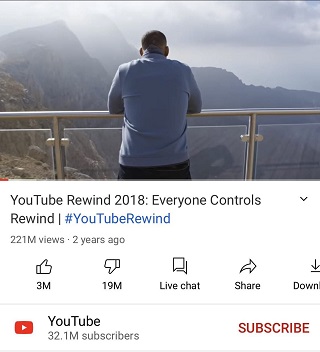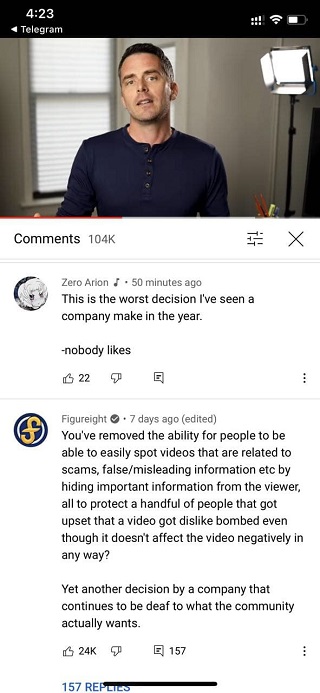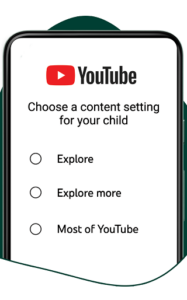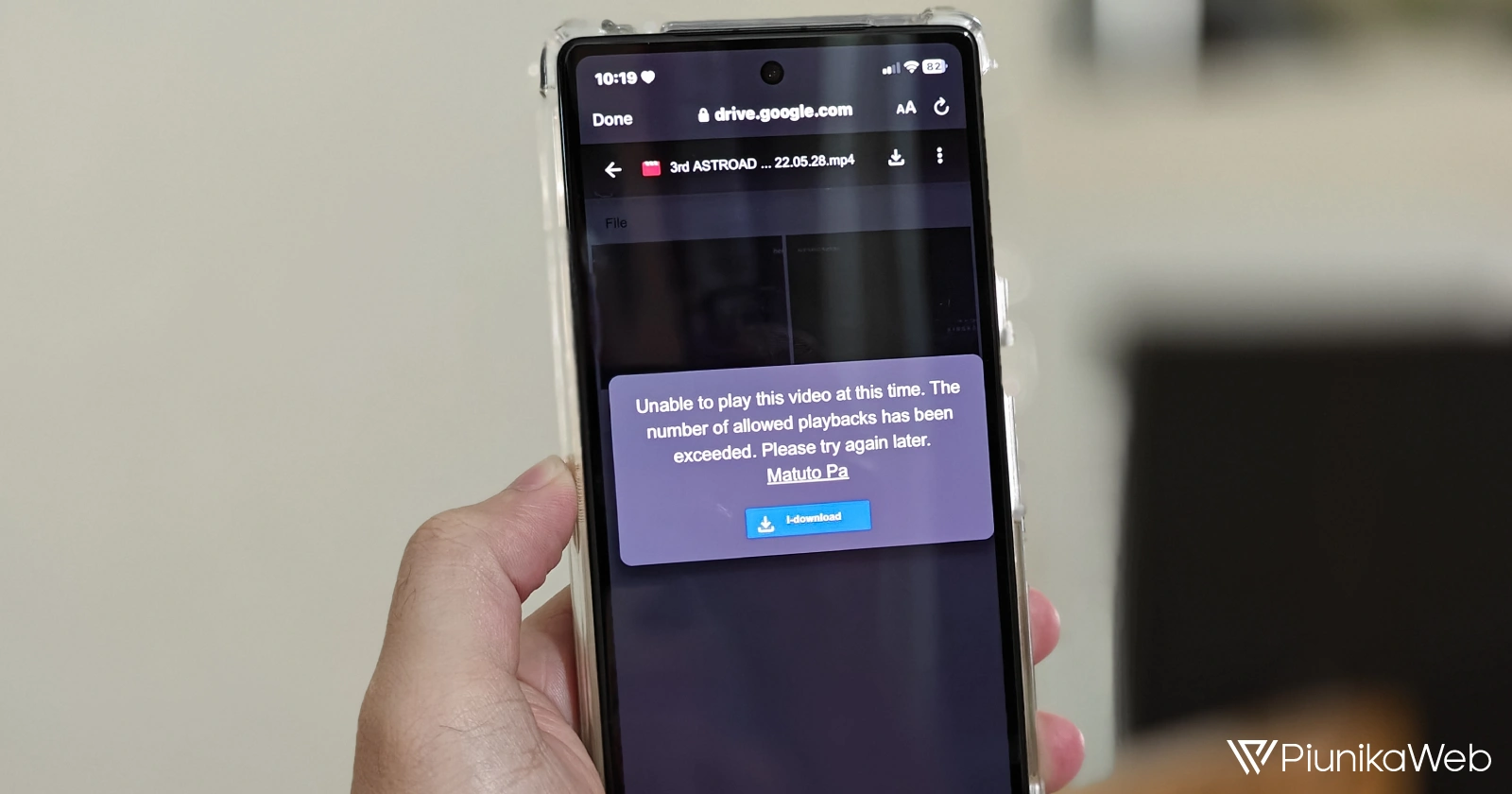Should YouTube bring back public dislikes count?
— PiunikaWeb (@PiunikaWeb) November 21, 2021
Vote below & read our opinion here: https://t.co/TT1SfIhmz2
New updates are being added to the bottom of the story…
Original story (from Nov 21) follows:
YouTube recently announced that videos on the platform will no longer display the dislikes count for viewers to see, instead only the upvote/likes count will remain visible.
According to YouTube, this change is meant to promote “respectful interactions between viewers and creators” in a bid to “help better protect our creators from harassment, and reduce dislike attacks.”
It’s definitely good to see YouTube showing concern for creators. Not your usual dose from big companies, which makes the move even more commendable yet still questionable, to some extent.
However, hiding the public dislike counter from videos will likely do more harm than good to the small creators YouTube claims to be protecting with this decision.
In a video, YouTube further justifies this decision by noting that other social media platforms do not even have a dislike button, so having one that doesn’t show the count is much better than having none at all.
No denying the truth in this statement, but YouTube is nothing like Meta, Instagram or even Twitter, which is currently testing a downvote button on replies. Besides being a social media platform, YouTube is also a video search engine.
Since people come to YouTube to search for various video content, some sort of ranking or rating system is necessary to determine which search result is best suited to one’s prevailing requirements.
And one of the most basic metrics one can use to tell how best or bad a certain video in the search results fits their needs is through the likes and dislikes count.
Once I arrive on any YouTube video, my eyes quickly shift between the total view count, like and dislike sections to determine if what I’m about to engage in will be worth my time.
While the view count is a generic metric to use, the ratio of the like vs dislike count presents viewers with a rough, but better idea of the quality they are about to get on a given subject of interest.

For creators that YouTube claims to be protecting, the like vs dislike ratio is also an easy measure of how viewers received the content provided to them. Of course, no one would willingly dislike something they enjoyed watching and vice versa is also true.
This is, in fact, one of the best ways creators can collect feedback from their fan base. It’s a mirror of how bad or good your content is, and offers a window for self criticism.
But according to YouTube, having only the like/upvote count visible is what creators need to avoid being unfairly targeted by dislike attacks, something I’m not fully in agreement with.
Disabling the dislike count means only one thing — that those who still want their feedback about the video they just watched visible to the public will head straight into the comments section. And this is where it gets really muddy.
The comments section on YouTube videos is the breeding ground for negative feedback and one that needs even more attention than the dislike counter.
This isn’t to say everything that goes down in the comments is vile, but it definitely has a bigger impact on the creator than a mere dislike count. One can read and comprehend written text in a different manner compared to a dislike.

Sure, creators can choose to disable the comments section, but how would they get insightful feedback from viewers regarding the quality of their work?
Well, YouTube says the dislike count will still be available in the backend albeit with a bit of a hassle. This contradicts the platform’s claim of protecting creators since they can still see the data.
So, who is being protected here? Is it really the creator or YouTube is simply protecting its own business interests?
Being a search engine, YouTube relies on clicks. From the look of things, Google seems inclined towards doing anything to amplify these clicks.
With the hidden dislike count, you can’t tell how good or bad a video is at a glance. Instead, you’ll be forced to click on it for a quick preview before proceeding or moving on to the next item in your search results.
This click is enough to prompt an ad before the video playback begins and probably even one more as you preview it. More clicks means more ads getting more eyeballs and hence more money for YouTube.
For general viewers, chances of ending up on clickbait videos are significantly increased with this move since one can’t easily tell the all-round quality of the content by looking at the title and likes count.

It’s a strange decision that not even the small creators that YouTube is protecting are happy about, something you can check out in the comments section of the official announcement video, but YouTube believes it’s a small change that everyone will get used to in no time.
While hiding the public dislikes count is one way of curbing harassment on the platform, YouTube should be more worried about the often despicable comments section than the number of dislikes on a video.
The amount of hatred spewed by a section of viewers in the comments section can definitely be detrimental to a creator’s state of mind than a mere dislike counter.
Hopefully someone over at YouTube listens to the public outrage and actually does something about this backward change. Let us know what your thoughts through the poll below or in the comments section at the bottom.
Update 1 (Nov. 28, 2021)
The results for the poll are live, with 100% of the voters agreeing that YouTube should bring back public dislikes count. In case you missed the poll, you are welcome to share your thoughts in the comments section at the bottom.
Update 2 (Dec. 19, 2022)
12:45 pm (IST): YouTube is reportedly working to address the spam comments with better spam protection and by implementing 24-hour bans on accounts that leave abusive comments. More on that here.
PiunikaWeb started as purely an investigative tech journalism website with main focus on ‘breaking’ or ‘exclusive’ news. In no time, our stories got picked up by the likes of Forbes, Foxnews, Gizmodo, TechCrunch, Engadget, The Verge, Macrumors, and many others. Want to know more about us? Head here.

![[Update: Better detection & 24-hour bans] YouTube should be more concerned about the horrible comment section, not video dislikes [Update: Better detection & 24-hour bans] YouTube should be more concerned about the horrible comment section, not video dislikes](https://piunikaweb.com/wp-content/uploads/2021/04/youtube-featured.jpg)


